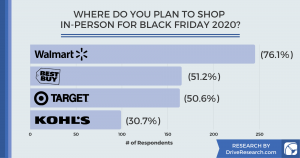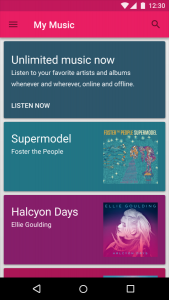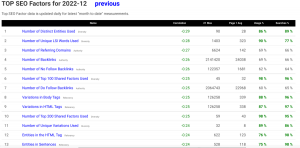Trisha Winter , July 27, 2017

Once you’ve figured out incentives, enablement and recruitment for referral partners you’re ready to provide a smooth and informative onboarding experience.
Here are the 6 key things you need to do during onboarding of referral partners:
- Collect necessary information
- Educate on the target buyer profile – including personas
- Train on how to make a one-to-one referral ask
- Train on various ways to input referrals into tracking system
- Discuss what happens to a referral lead once they provide it
- Educate on referral success criteria, data access and any SLAs
1. Collect necessary information from referral partners
It’s pretty obvious that you need to collect all of the basic information about a referral partner so that you can contact them and pay them, but here are a few additional things you may want to consider.
- Referral partners are pretty likely to surpass the taxable limit for incentives. This means you’ll want to collect the appropriate W-9 (or W-8) information so your company can submit 1099’s at the end of the year.
- If you decide to pay partners via direct deposit, you’ll need to collect the appropriate bank and account information to make this happen.
- If sales (direct or partner) is involved in the program, you may want the partner to select the salesperson that they work with. This will give you the ability to track by salesperson for the partner referral activity.
- If you’d like to include an approval process, make it quick and seamless for the partner.
With whatever information you collect, make it as easy on the partner as possible. Prefill fields if their contact info is available from your CRM or other systems, make access Single Sign On (SSO) and provide a simple online workflow.
2. Educate on the target buyer profile – including personas
Referral partners don’t need the level of training that resellers do, but they do need to know what type of company and titles within that company are a fit for your solution. Provide videos or webinar training on all of the details of your target company profile from industry to software they use. Make sure you dive into details on the buying center/department and all of the personas. Describe in detail the initiatives, challenges and needs for each persona and how your solution can help.
And if you’ve got a target account/ABM strategy, provide them your list of accounts and watch the referrals get more specific and qualified!
3. Train on how to make a one-to-one referral ask
This step may seem silly, but the fact is, the people making referrals are typically salespeople and referral training is not standard practice. Teach your referral partners:
- The best times to introduce your product/service to a target buyer – this depends on the type of referral partner.
- For referral partners like ISVs that are selling a symbiotic product this can be by asking if they have a need during qualification, it can be done in late stages of the opportunity or post-sale as they try to continue to add value to that customer.
- For referral partners that are leveraging their network outside of a sales process, they can begin to educate their network with social posts and by directly sending content, then contacting them to determine interest.
- For customer-facing partner employees making recommendations to their customers, detail if they should ask at a certain stage in their customer journey or transaction.
- The way to introduce your product or service – specify any brand message, value propositions or product information that you want passed along as part of the referral. Tip: Locking in this information to the referral communication method helps to ensure that nothing gets lost in translation.
4. Train on various ways to input referrals into tracking system
Providing access to referral methods isn’t enough. Sure, they should be pretty easy to use and not need functional training on which buttons to press to create a url to share. Instead, focus your training on the use case and value for using each method. And above all, train them on how to make one-to-one referrals versus one-to-many blasts. Here are the basic concepts:
- Lead forms – Everyone understands how to fill out a form with contact info, but coach your referral partners to have a conversation with prospects and qualify them first to ensure a higher quality lead gets handed to your sales team.
- Verbal referrals – If direct or partner sales teams are involved in recruiting referral partners and collecting referrals, make sure both sales and the partner are trained on who to contact, whether referrals will be accepted in lead stage or opportunity stage or both and how that verbal referral gets into the system to be tracked.
- Email – Ensure your referral partners understand how to pull in their contacts to easily select them to send a referral email. Additionally, coach them on personalizing the email and making a one-to-one ask versus a group Bcc blast.
- Shareable URL – If you’re giving referral partners the ability to create a personal, trackable referral link you need to give them some ideas on where to use it. Here are just a few: LinkedIn profile, business website, email signature, blog post or text message.
- Social media – Social posts from partners can be great to drive brand awareness, but if you’re looking for referrals, you need to train them on using your social posting referral methods for directly messaging an individual to make a one-to-one ask.
- Print cards – A printed referral card with the personal URL/tracking code on it can be a great way to bring offline conversations on line. Point out to partners the instances like tradeshows and other face-to-face meetings where this could be an excellent leave behind.
5. Discuss what happens to a referral lead once they provide it
Your referral partners aren’t going to blindly trust that you are going to take good care of their referral. They need to understand your process and how you will be communicating with the prospect. Here is a best practice flow, but work with sales to get your specific process.
- Once the referral lead information gets to us, we route it to the salesperson that owns your relationship. That way, you can tell your referral exactly who will be contacting them.
- The lead information goes into Salesforce and the salesperson can see that you made the referral. They will contact you to get additional information on the prospect and get a warm introduction from you.
- From there, the salesperson will guide the prospect through the sales process. You will see status updates in your personal referral portal (and we’ll send you emails too) that tell you the stage of the opportunity. You are encouraged to reach out to the salesperson and prospect during this process to see if they have any questions or need some trusted advice.
- Once the prospect makes a purchase, you’ll be notified of that success and the amount of your reward earned and how it will be paid out.
6. Educate on referral success criteria, data access and any SLAs
There are a lot of factors to consider when establishing success criteria and incentives for your referral program. Success is most commonly at deal purchase, but retention periods can also be added. Additionally, some companies compensate at lead and deal close. Complexity is fine as long as you clearly communicate it.
- If your reward is split on multiple success events, make sure they understand this.
- If you have a retention period, let them know how long it is and how you will communicate with them during that time period to keep them engaged.
- If you reward higher for deal involvement, make sure they know how this will be tracked and judged so it isn’t based on verbal testimony.
You also don’t want to spend your days fielding emails and calls from partners wondering where their reward is so make sure you teach them where their referral status data lives and how to access it. Additionally, send them status emails which drive them back into the portal so you are proactively informing them of status. Be sure your salespeople have access to this information within Salesforce so they can handle any inquiries with ease.
If your referral partners are unmanaged, you can still encourage repeat referrals with escalating reward levels by quantity of successful referrals during a given time period. If managed, there may be a higher referral fee with a set number of successful referrals to be brought in each year. Either way, make sure this is clearly understood and that you provide updates (perhaps quarterly) on where they are relative to their goal.
The three video training plan
While I covered a lot of information in this article, most of it can be communicated to your referral partners intuitively through their referral program portal and via a short orientation video on how the program works. An additional video on your target buyer and one on how and when to refer and you should have all the materials you need to get referral partners productive.
With the onboarding process figured out, you’ll want to have a strong handle on how you are going to keep referral partners engaged and referring. To do that, read the next blog in the series about referral partner engagement best practices.
Step 1 – How to identify potential partners
Step 2 – How to engage and recruit partners
Step 3 – How to enable referral partners
Step 4 – How to incentivize referral partners
Step 5 – How to onboard referral partners
Step 6 – How to keep referral partners engaged
Step 7 – Key metrics for referral partner programs
Step 8 – Scale Referral Partner Program
(64)
Report Post







